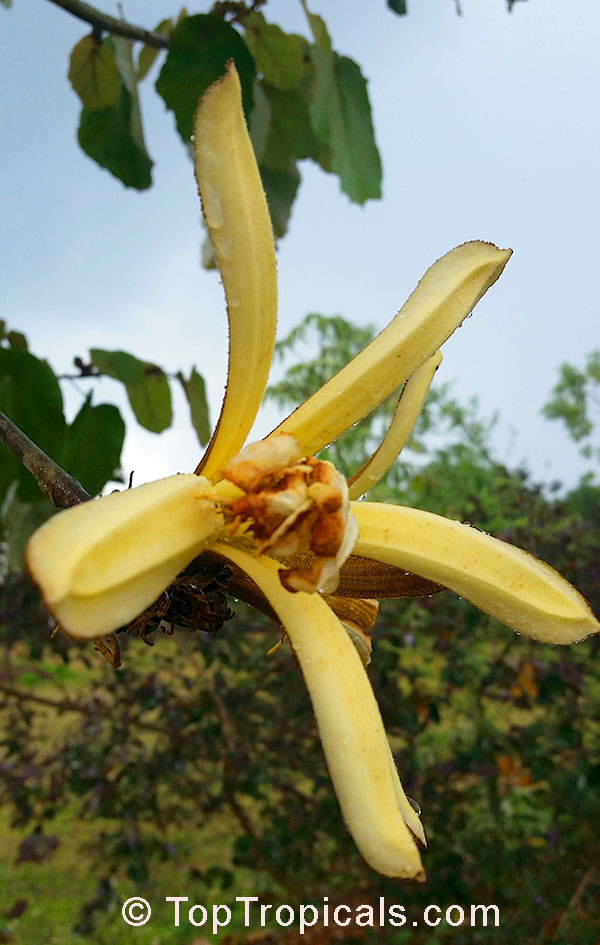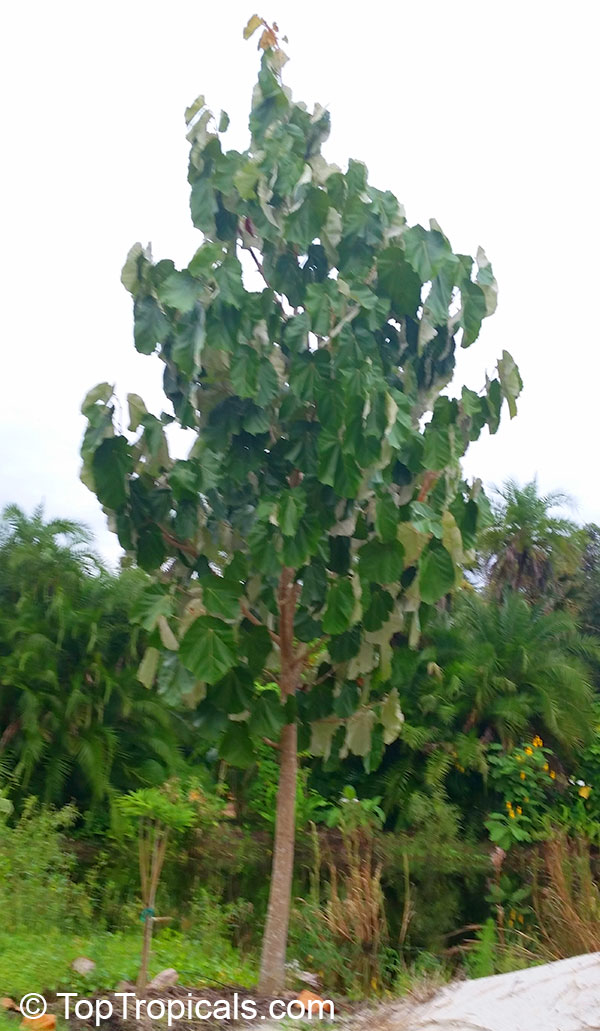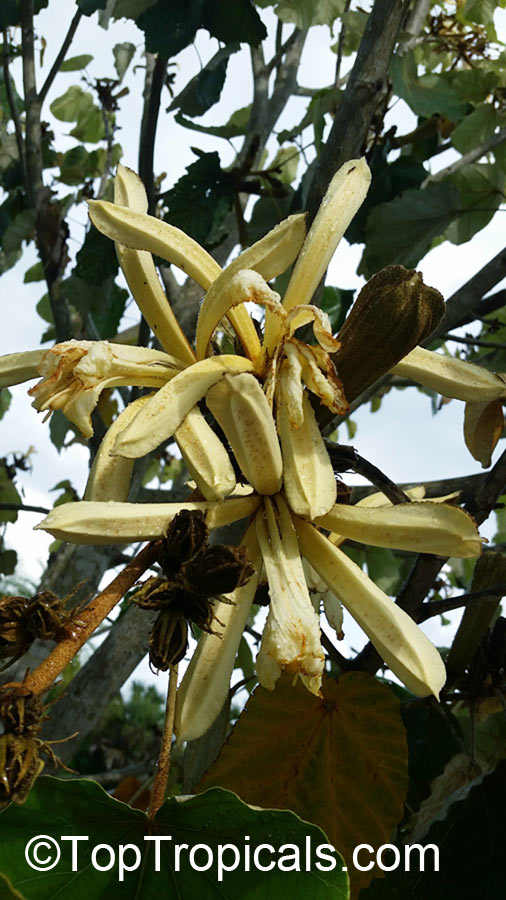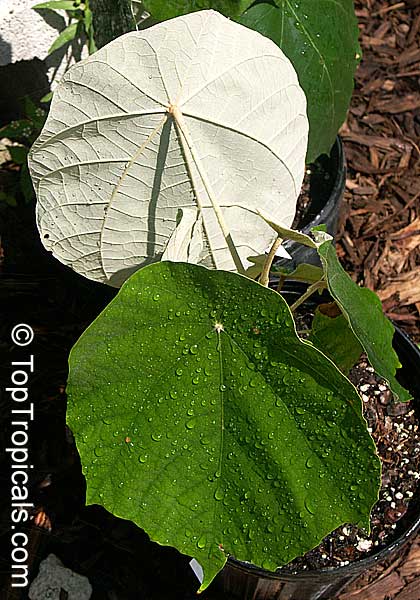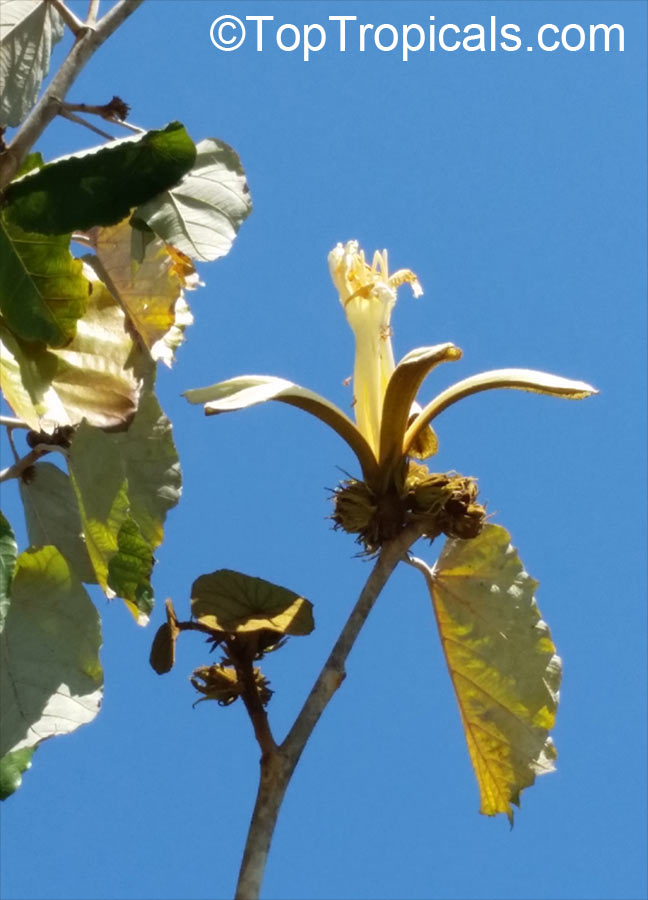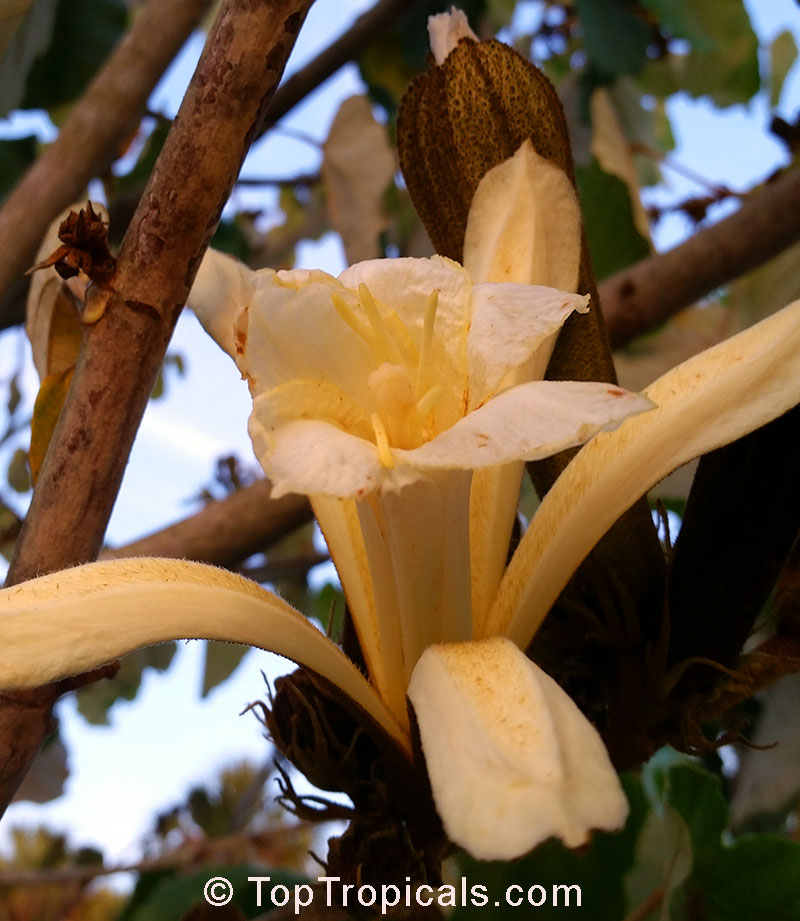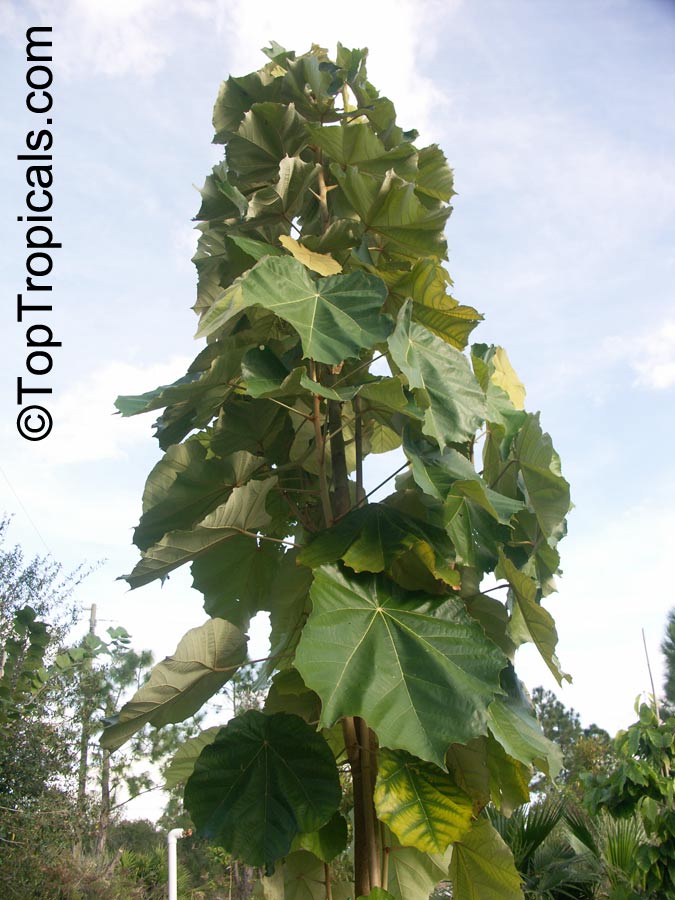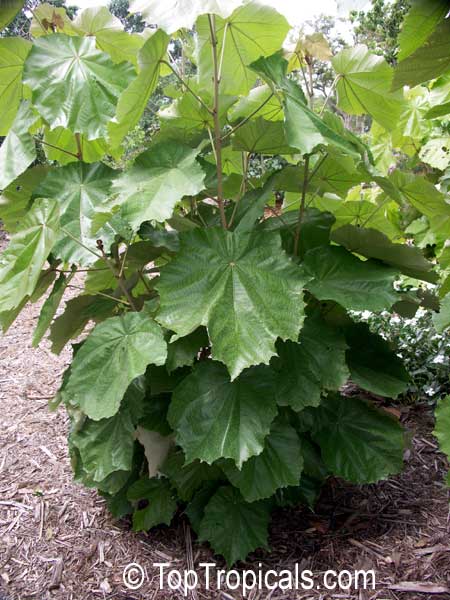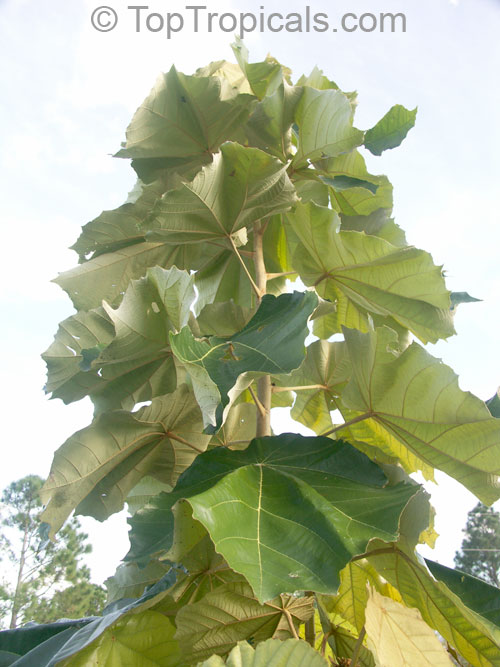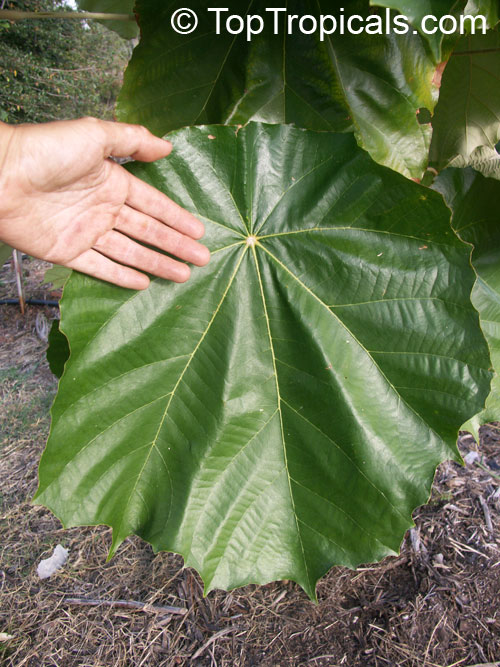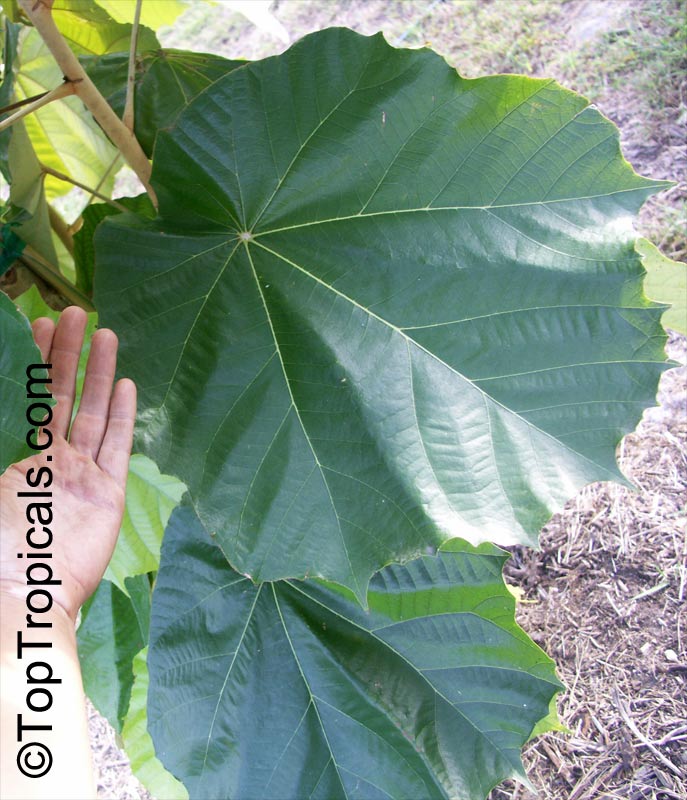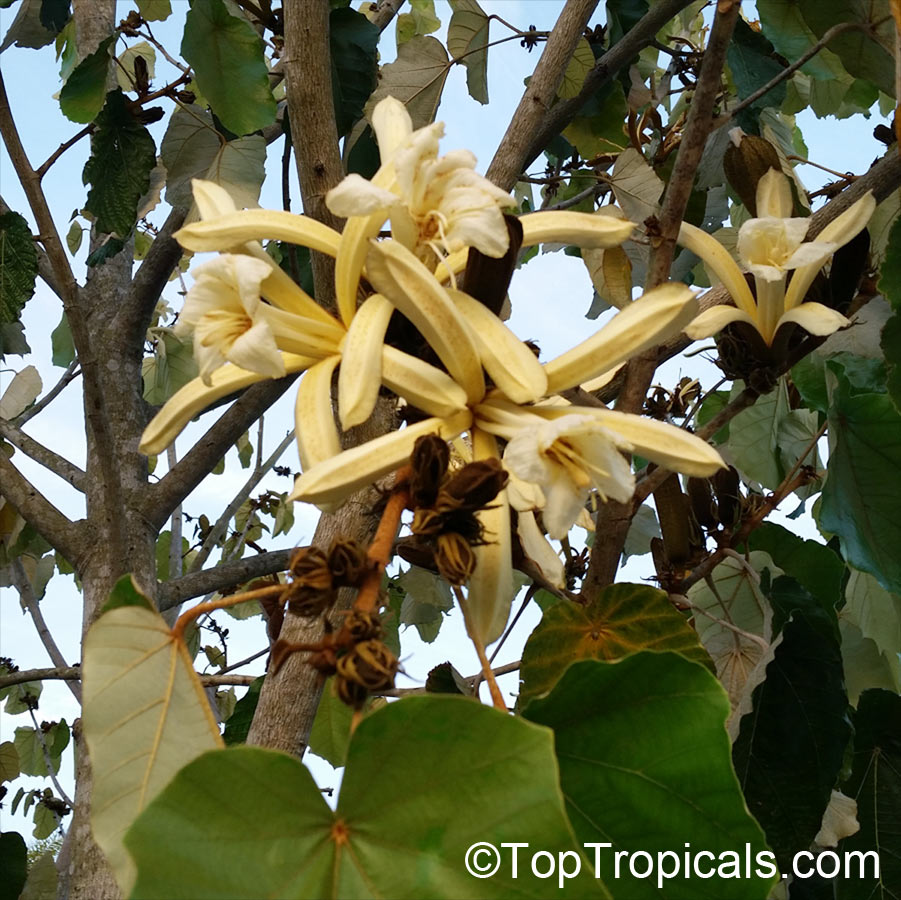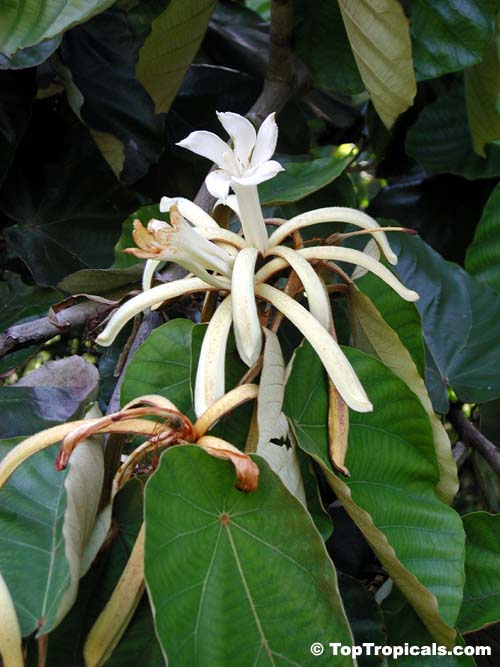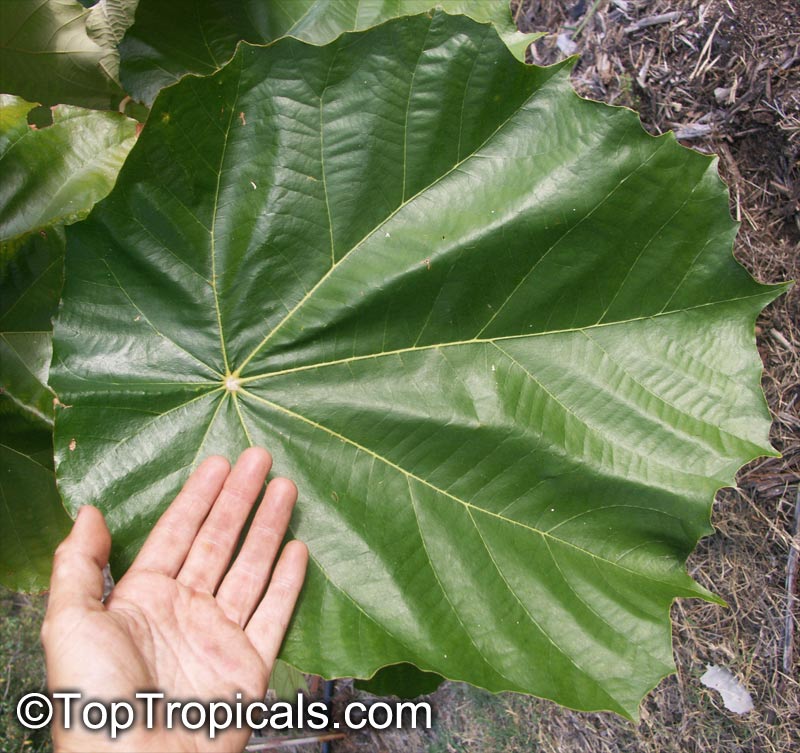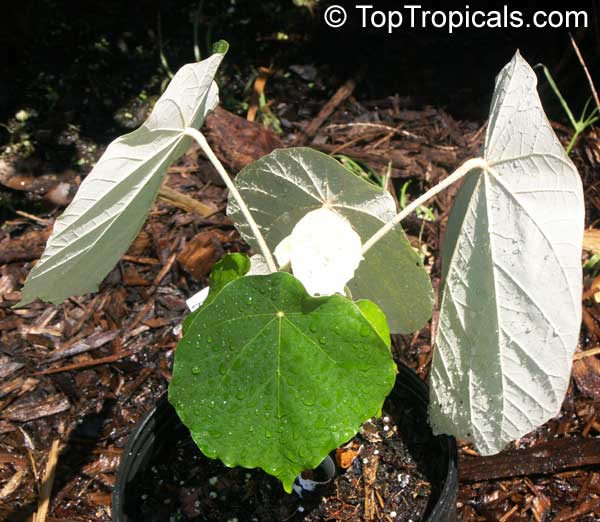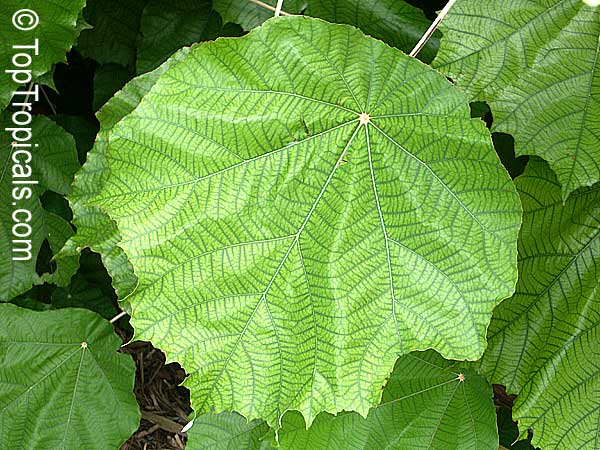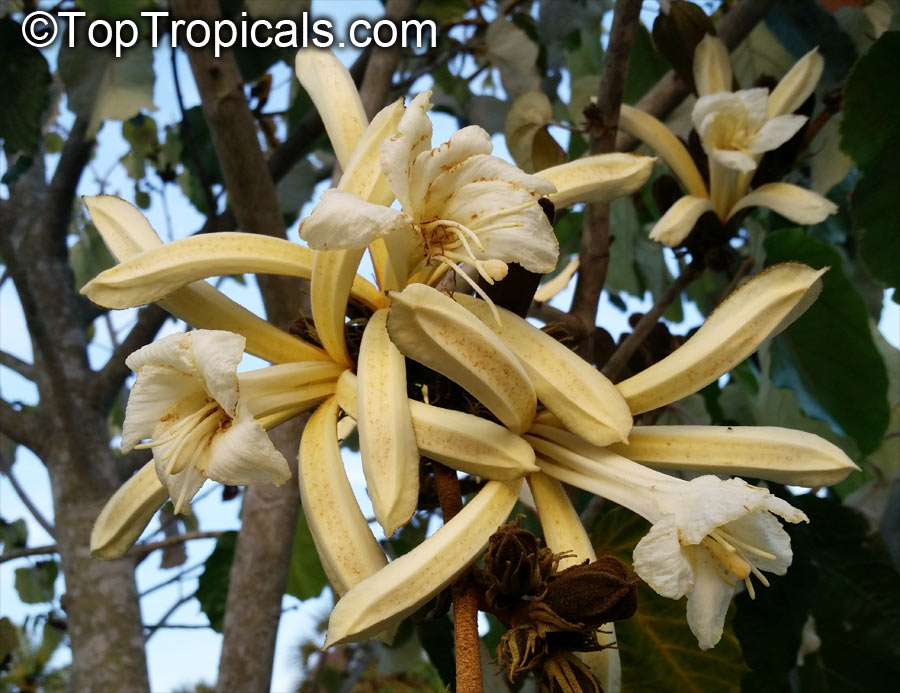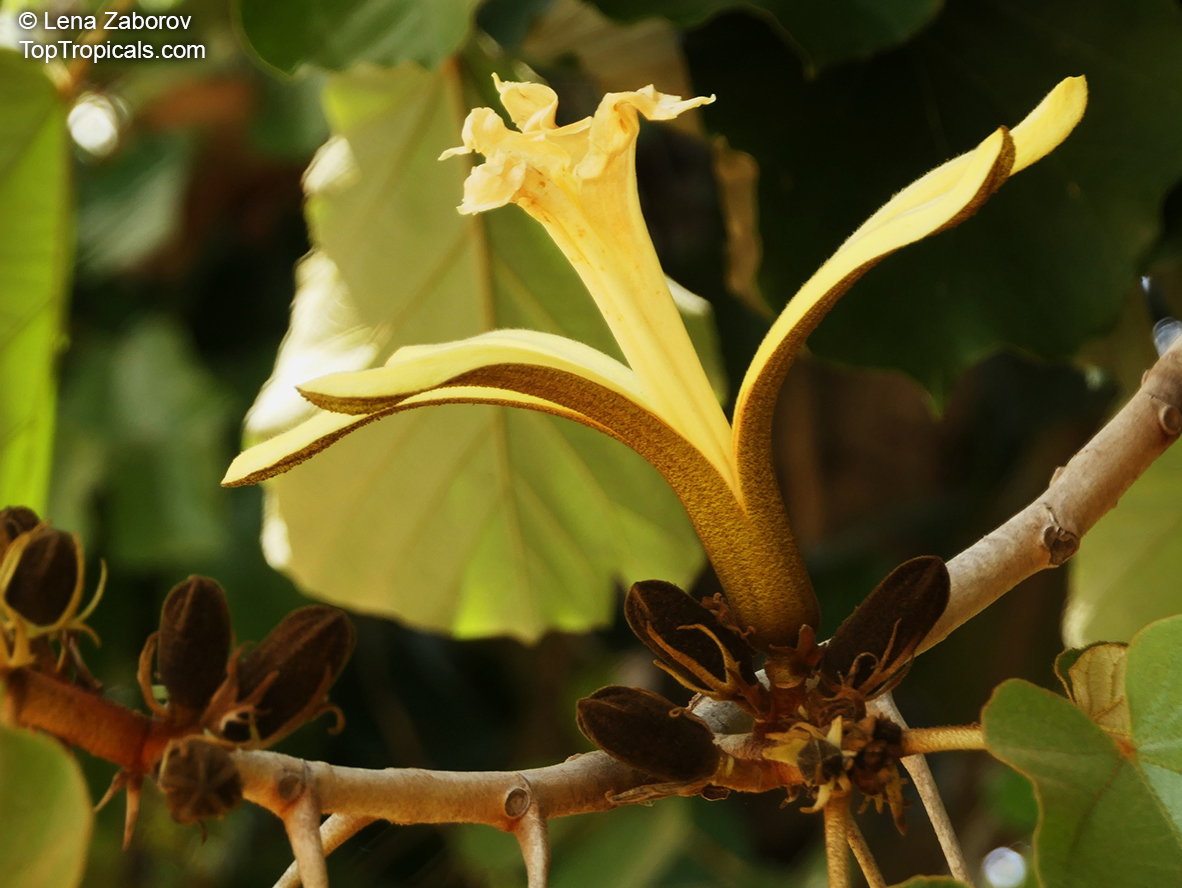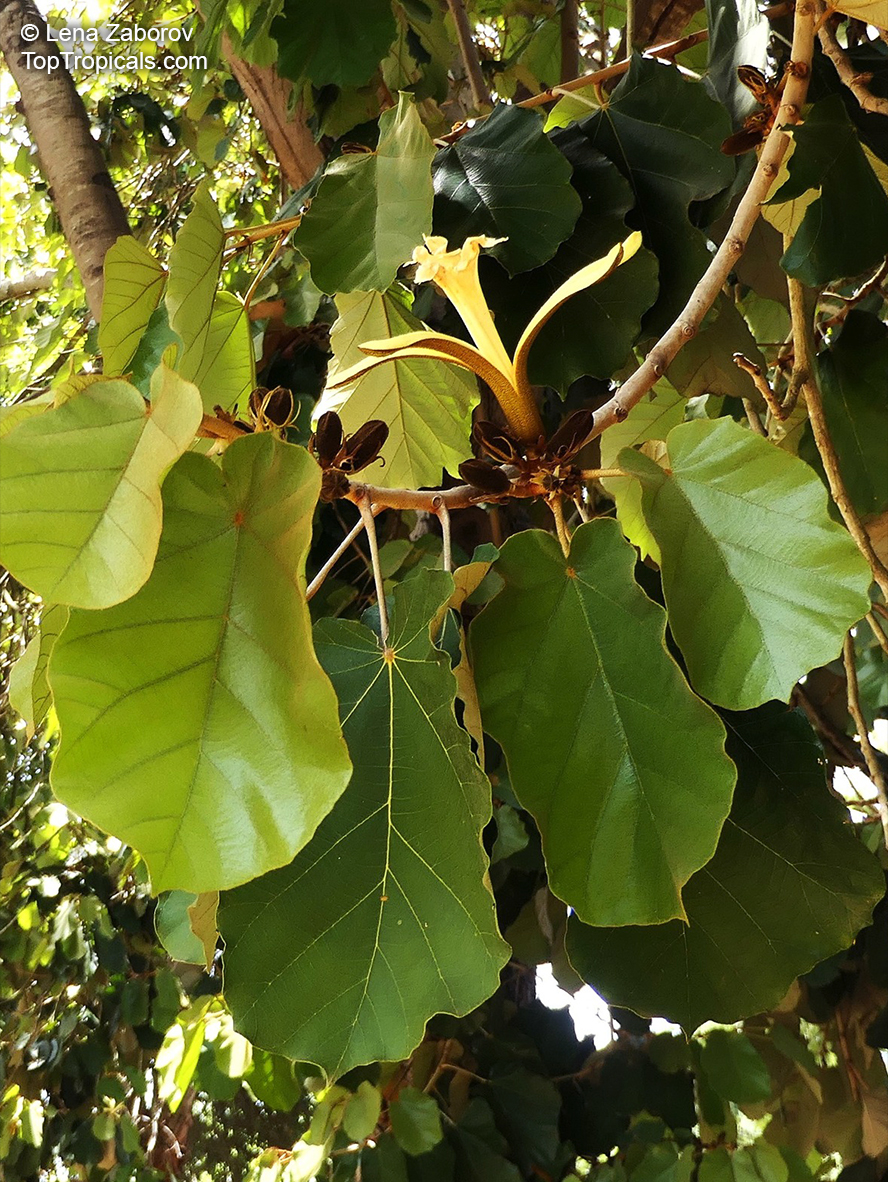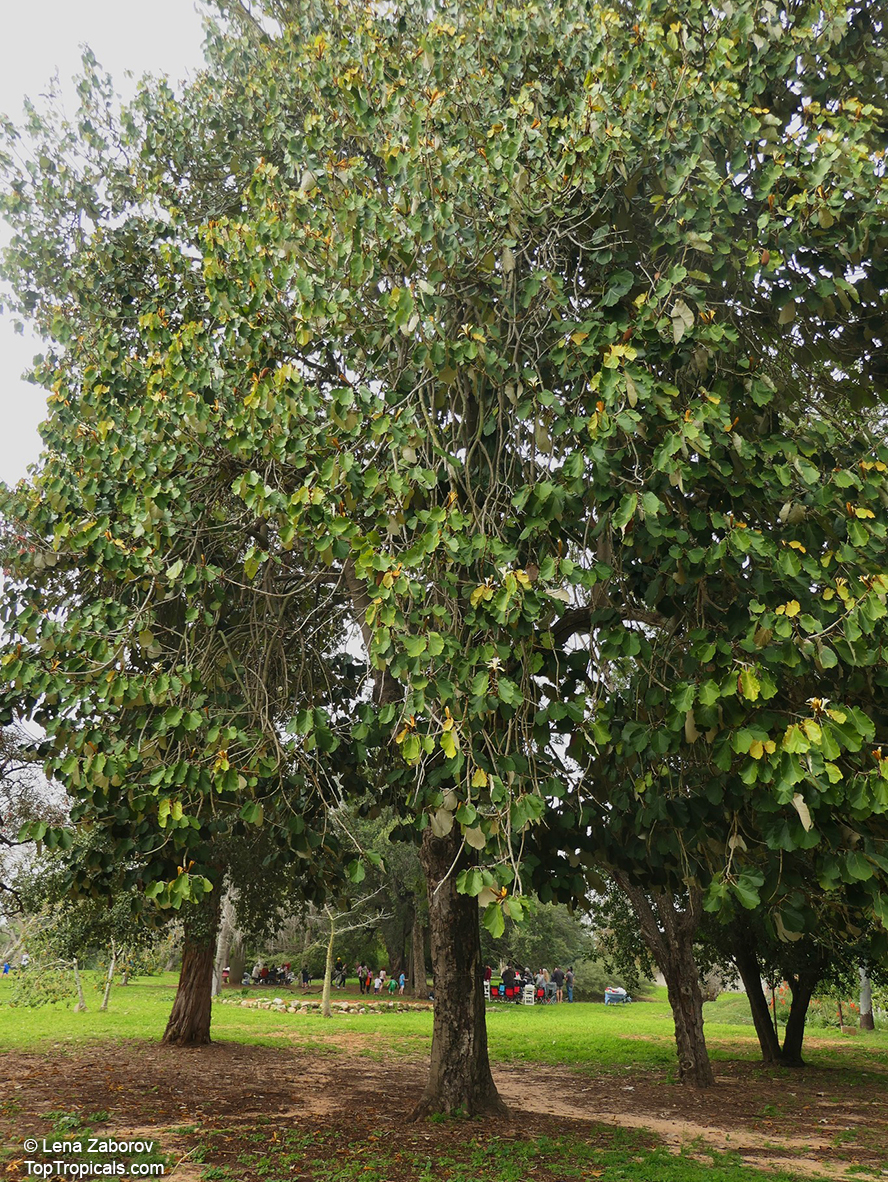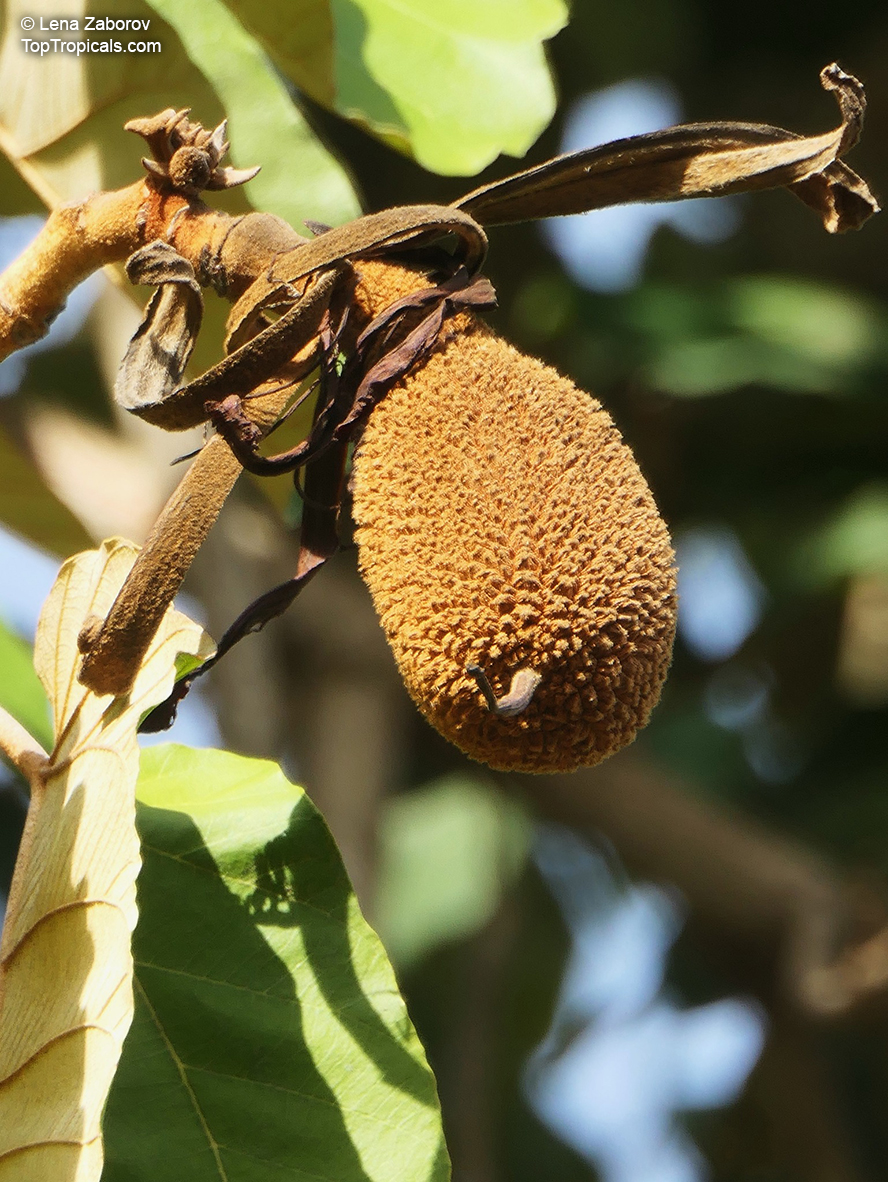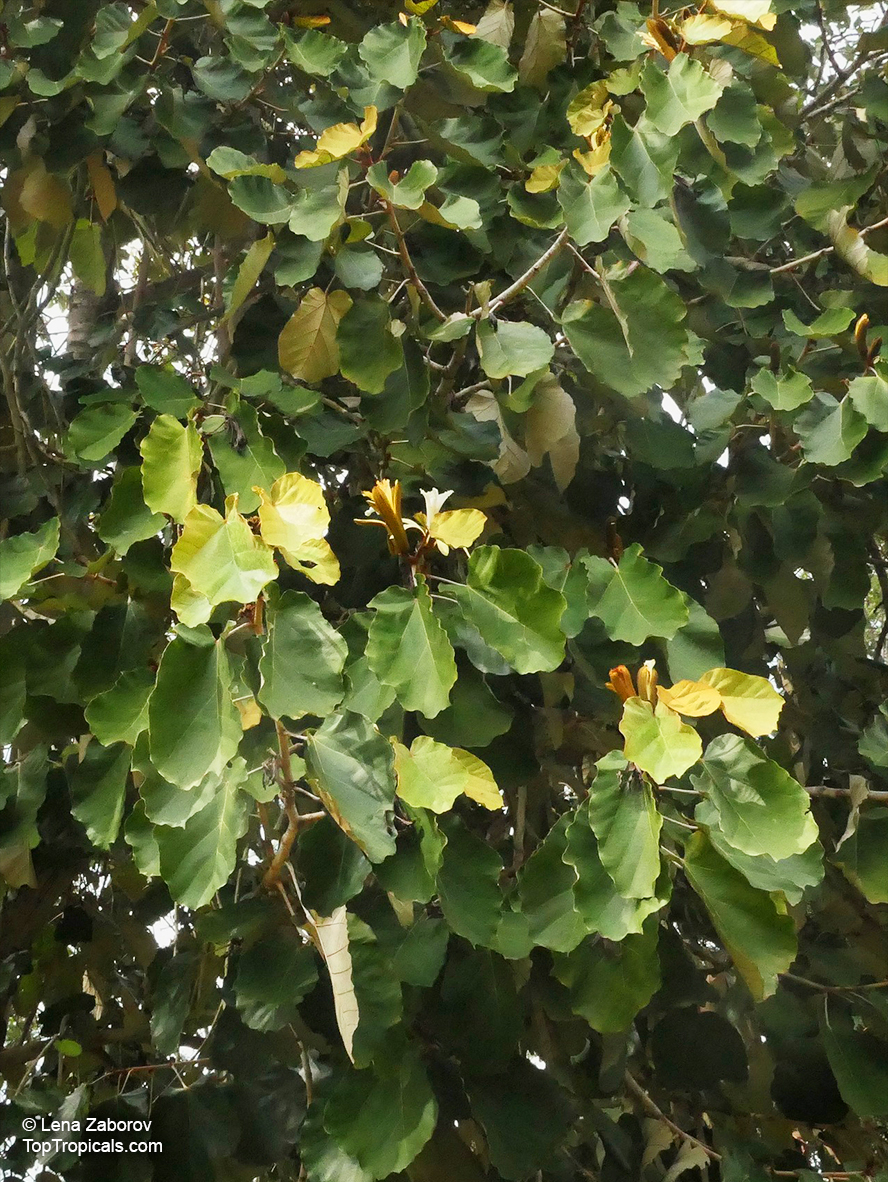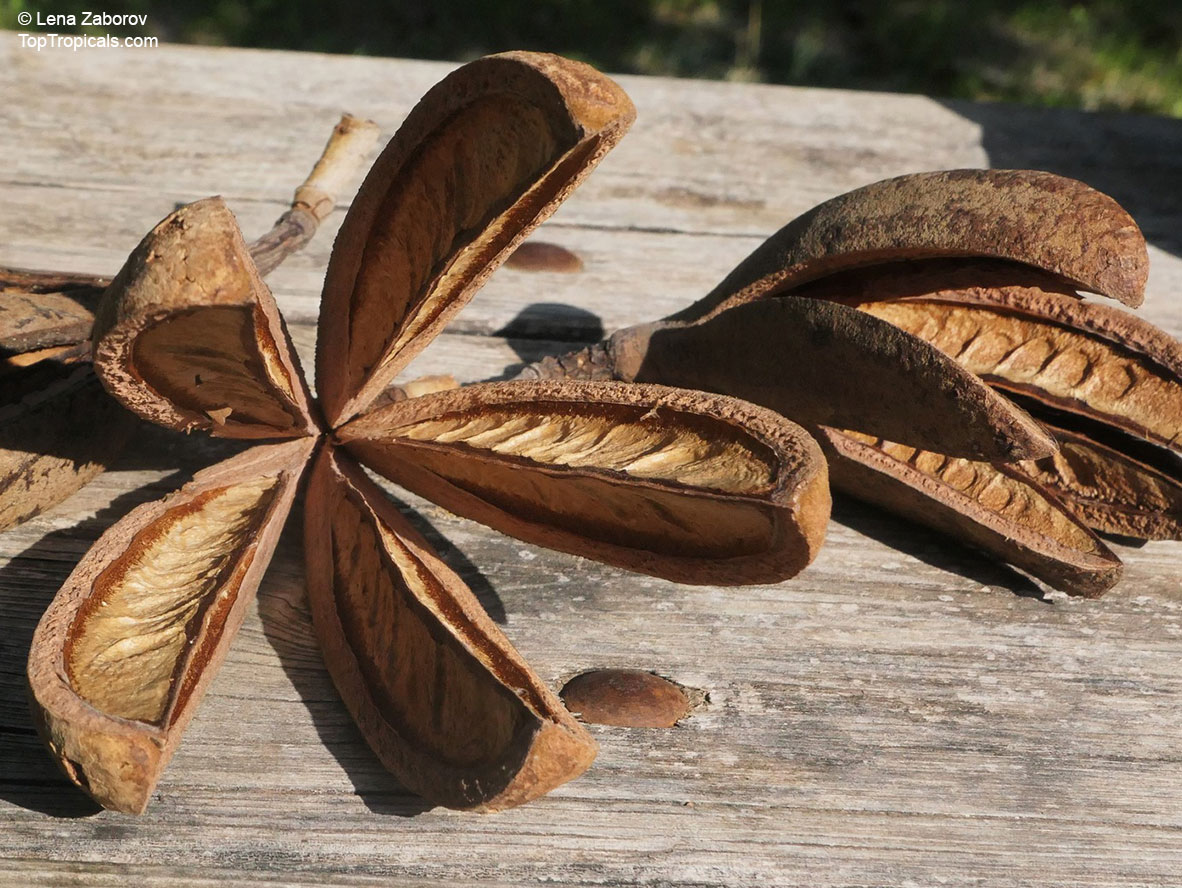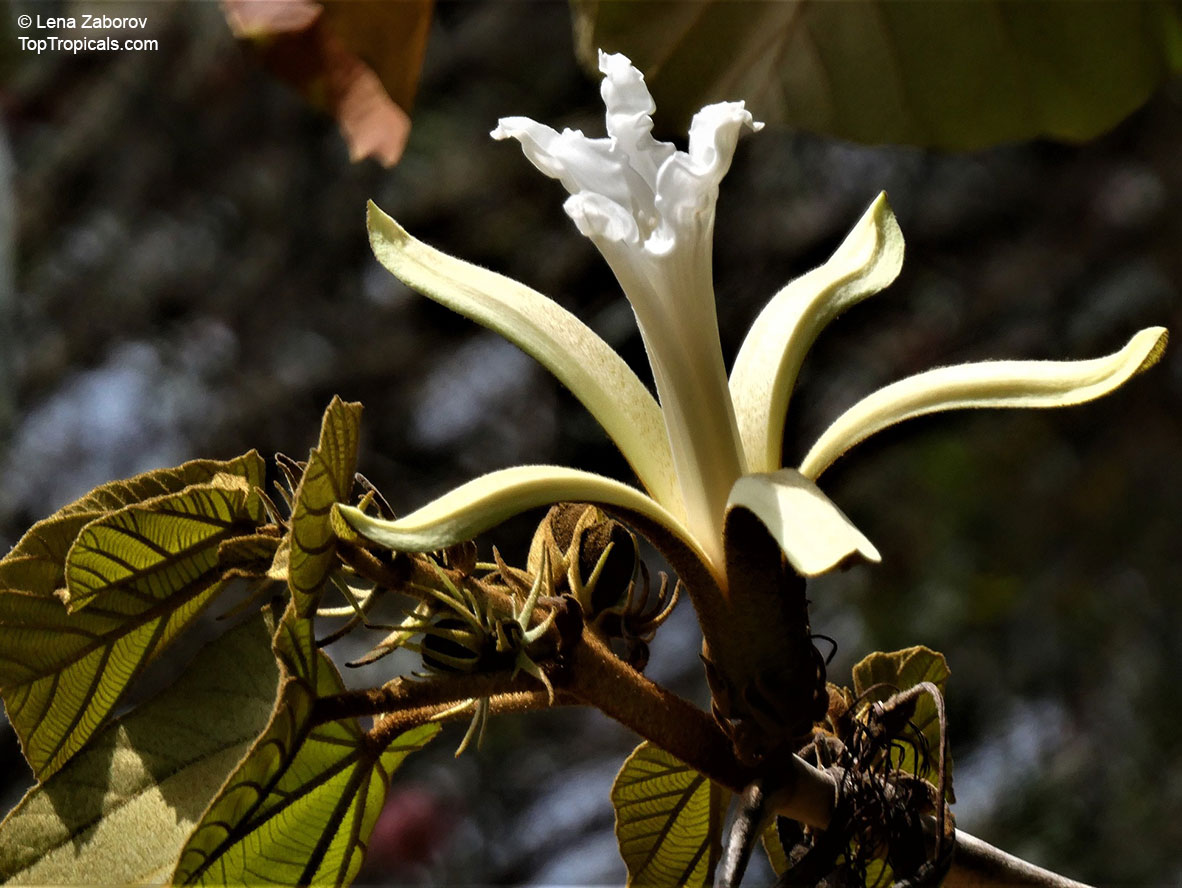Pterospermum acerifolium (Dinnerplate Tree)
Top Tropicals Plant Encyclopedia
Botanical name: Pterospermum acerifolium
Common name: Dinnerplate Tree
Family: Malvaceae
Subfamily: Dombeyoideae
Origin: Burma






This evergreen fast-growing tree can reach a mature height taller than 20 ft and like full sun and a good amount of regular water. It produces white or off-white flowers in summer, which are fragrant and attract butterflies and hummingbirds. The Dinnerplate Tree (Pterospermum acerifolium) is native to Burma (Myanmar) but is used around the world as a street tree or specimen tree and is considered to be cold hardy down to at least 30s F (USDA zone 9-11).
The Dinner plate tree is outstanding for avenue plantation. Its broad and dense leaves give complete shade. The large flowers are unique in shape and have an exotic fragrance. the grounded flower petals cure chronic headache. The outer sepal is of light yellow color. The flower is funnel shaped and white. The whole flower gives the look of a designer garment. Huge leaves used as plates in India, where it is grown for shade and for valuable timber similar to oak and teak.
When grown in a pot the Dinnerplate Tree should be given a sheltered, bright location and watered regularly during the growing season. It's important to protect it from any cold winter temperatures, especially if it is grown in a pot. It is best to bring the pot holder inside to a sheltered area during the winter. If the plant is kept in a pot in a cold region it can be brought inside when needed, or covered with burlap to protect it from cold temperatures. During the winter months the tree should have reduced water and should only be watered when the soil becomes dry.
